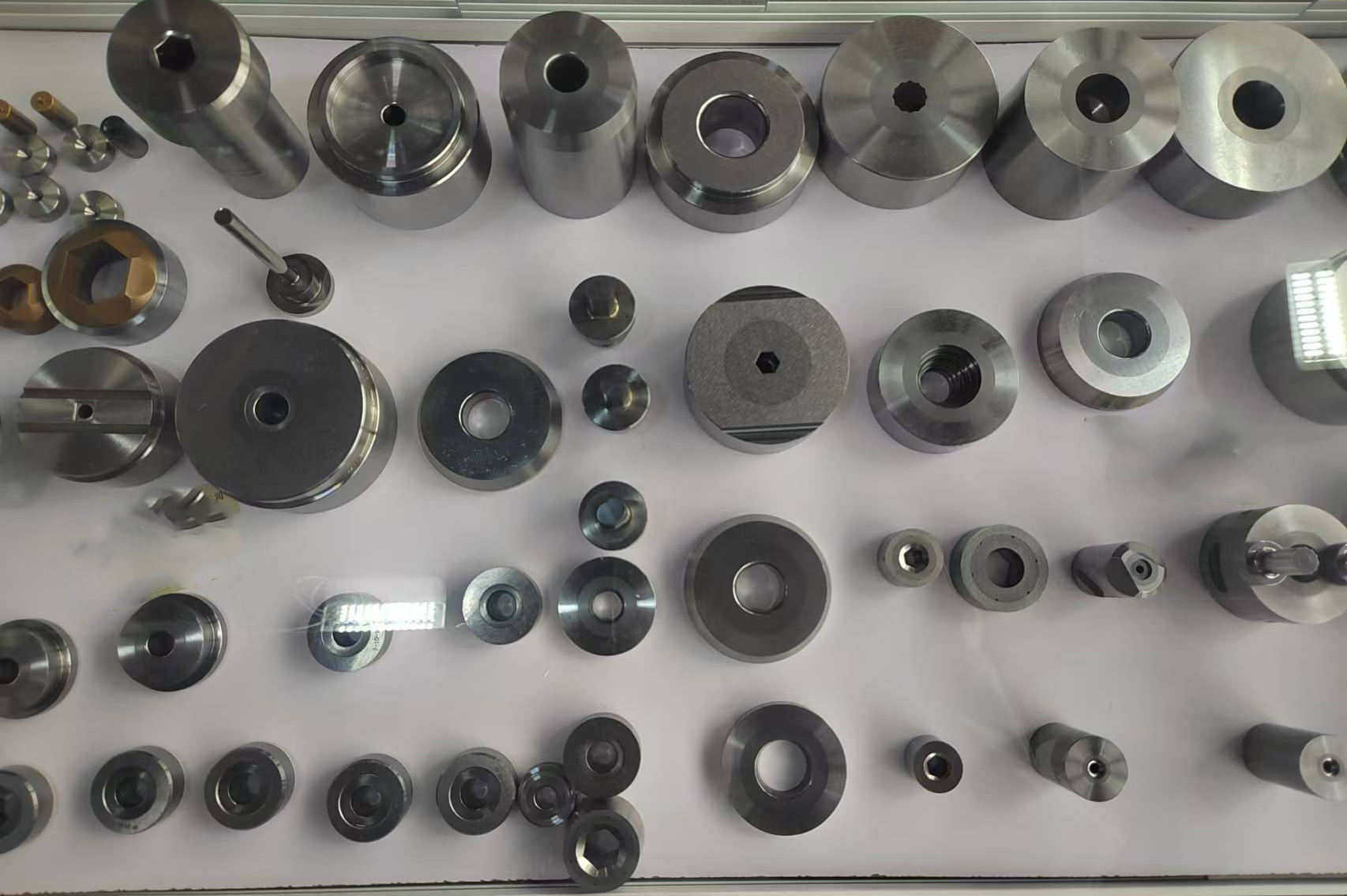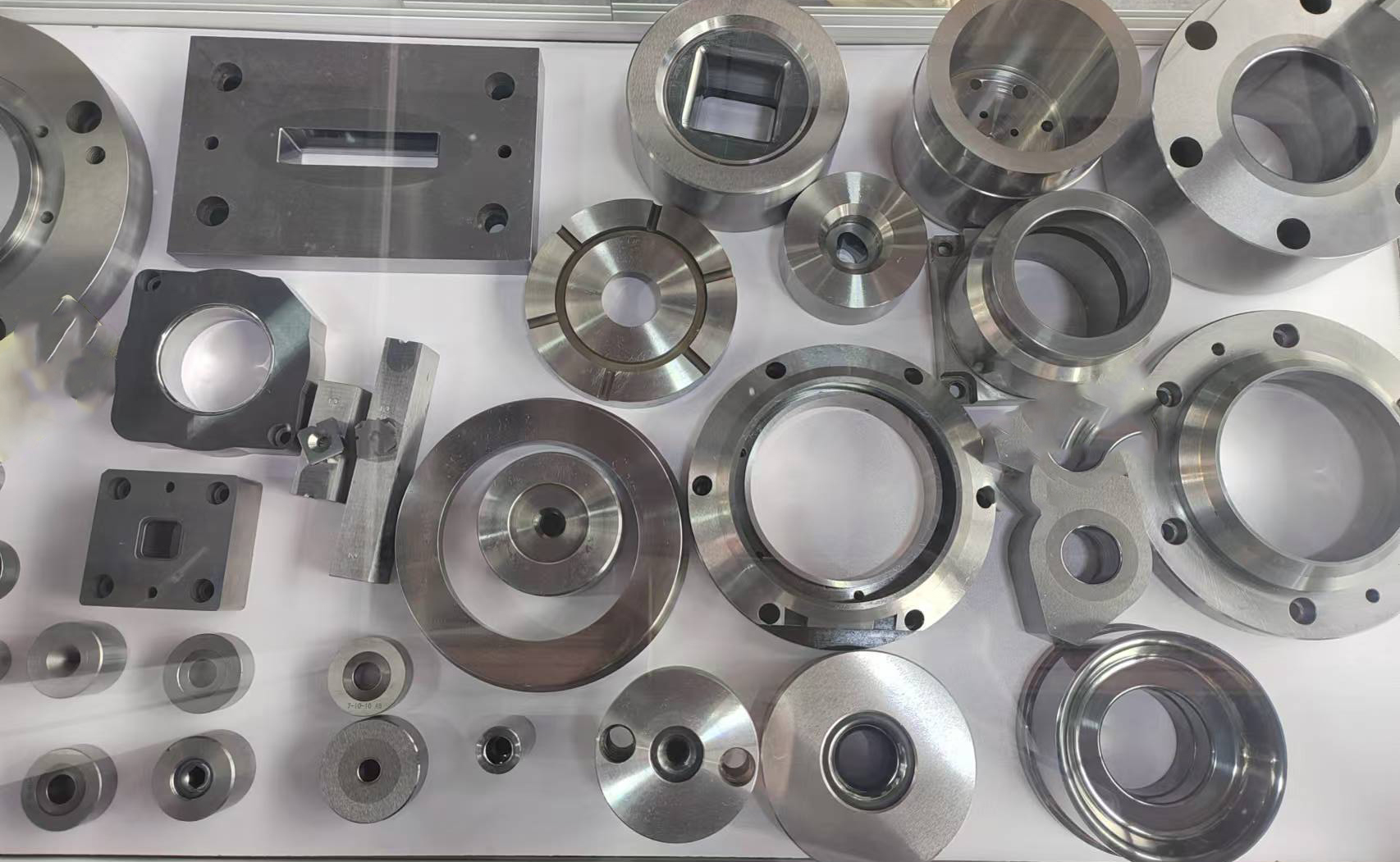24
2024
-
10
Morre o carburo de tungsteno: unha forte ferramenta na industria manufactureira
Os mortos de carburo de tungsteno, como ferramentas vitais na fabricación moderna, son amplamente utilizados en varios sectores de produción debido á súa alta dureza, resistencia á corrosión, resistencia a alta temperatura e baixo coeficiente de expansión térmica. Este artigo afonda nas características, campos de aplicacións, técnicas de fabricación e tendencias do mercado de matrices de carburo de tungsteno.
I. Características do carburo de tungsteno morre
Os matrices de carburo de tungsteno son normalmente feitos de tungsteno, cobalto e outros po metálicos a través de sinterización de alta temperatura, que posúen unha serie de excelentes propiedades. En primeiro lugar, teñen dureza extremadamente alta e poden manter unha dureza estable incluso a altas temperaturas, facendo que os matrices sexan resistentes ao desgaste durante o uso e estendendo así a súa vida útil. En segundo lugar, os matrices de carburo de tungsteno presentan unha boa resistencia á corrosión e resistencia a alta temperatura, permitíndolles manter a resistencia e precisión mecánicas estables en ambientes de traballo duros. Ademais, o baixo coeficiente de expansión térmica do carburo de tungsteno axuda a reducir os cambios de tamaño causados polas variacións de temperatura, garantindo a calidade do produto.

Os mortos de carburo de tungsteno xogan un papel crucial na industria manufactureira. A continuación móstranse as notas de material común e os seus correspondentes campos de aplicación:
Cualificacións de material común
Serie YG
YG3: Adecuado para debuxar metais non férreos e materiais non metais.
YG6: usado habitualmente para debuxar fíos de aceiro de gran diámetro e cordas de aceiro.
YG6X: En comparación con YG6, ten unha maior resistencia ao desgaste e é adecuado para tarefas de debuxo máis complexas.
YG8: unha nota importante para os matrices de debuxo, adecuada para debuxar diversas especificacións de fíos de aceiro.
YG15, YG20, YG20C, YG25: These grades are typically used for dies requiring high hardness and wear resistance, such as cold heading dies and cold punching dies.
Serie HU
HU20, HU222: These grades have specific physical and chemical properties, suitable for specific die manufacturing needs.
HWN1
HWN1 (Die de aliaxe non magnética): adecuado para os matrices empregados na produción de materiais magnéticos, evitando a magnetización da matriz nun ambiente magnético, o que podería afectar a calidade do produto.
Outras notas
YC20C, CT35, YJT30, MO15: These grades are commonly used for cold heading, cold punching, and shaping dies.
Serie YSN (como YSN20, YSN25, YSN30, etc.): usado para a aleación non magnética morre na produción de materiais magnéticos.
TMF: un grao de matriz non magnética unido a aceiro, tamén adecuado para a produción de materiais magnéticos.

Campos de aplicación
O debuxo morre
O debuxo de carburo de tungsteno ten unha parte importante para unha parte significativa dos matrices de carburo de tungsteno e son moi utilizados no debuxo de materiais metálicos como fíos de aceiro e cordas de aceiro.
Dirección fría, perforación en frío e morre en forma
Estes matrices úsanse en cabeceira en frío, perforación en frío e procesos de conformación, como a fabricación de fixadores como parafusos e noces.
Morre pola produción de material magnético
Os matrices de aliaxe non magnéticas son adecuados para a produción de materiais magnéticos, evitando a interferencia da matriz nos materiais magnéticos.
Outros campos
Os matrices de carburo de tungsteno tamén se usan amplamente en procesamento mecánico, metalurxia, perforación de petróleo, ferramentas mineiras, comunicacións electrónicas, construción e outros campos para a fabricación de varias ferramentas de corte, compoñentes resistentes ao desgaste e moito máis.
En resumo, hai numerosas notas comúns de material de carburo de tungsteno, cada un cos seus campos específicos de aplicación e vantaxes. Ao seleccionar morre o carburo de tungsteno, é esencial escoller a nota material adecuada en función dos requisitos específicos de uso e ambientes de traballo para garantir o rendemento e a vida útil da matriz.
Noticias relacionadas
Zhuzhou Chuangde Cemented Carbide Co., Ltd
Engadir215, edificio 1, International Students Pioneer Park, Taishan Road, Tianyuan District, Zhuzhou City
Envíanos correo
Copyright :Zhuzhou Chuangde Cemented Carbide Co., Ltd
Sitemap
XML
Privacy policy
















